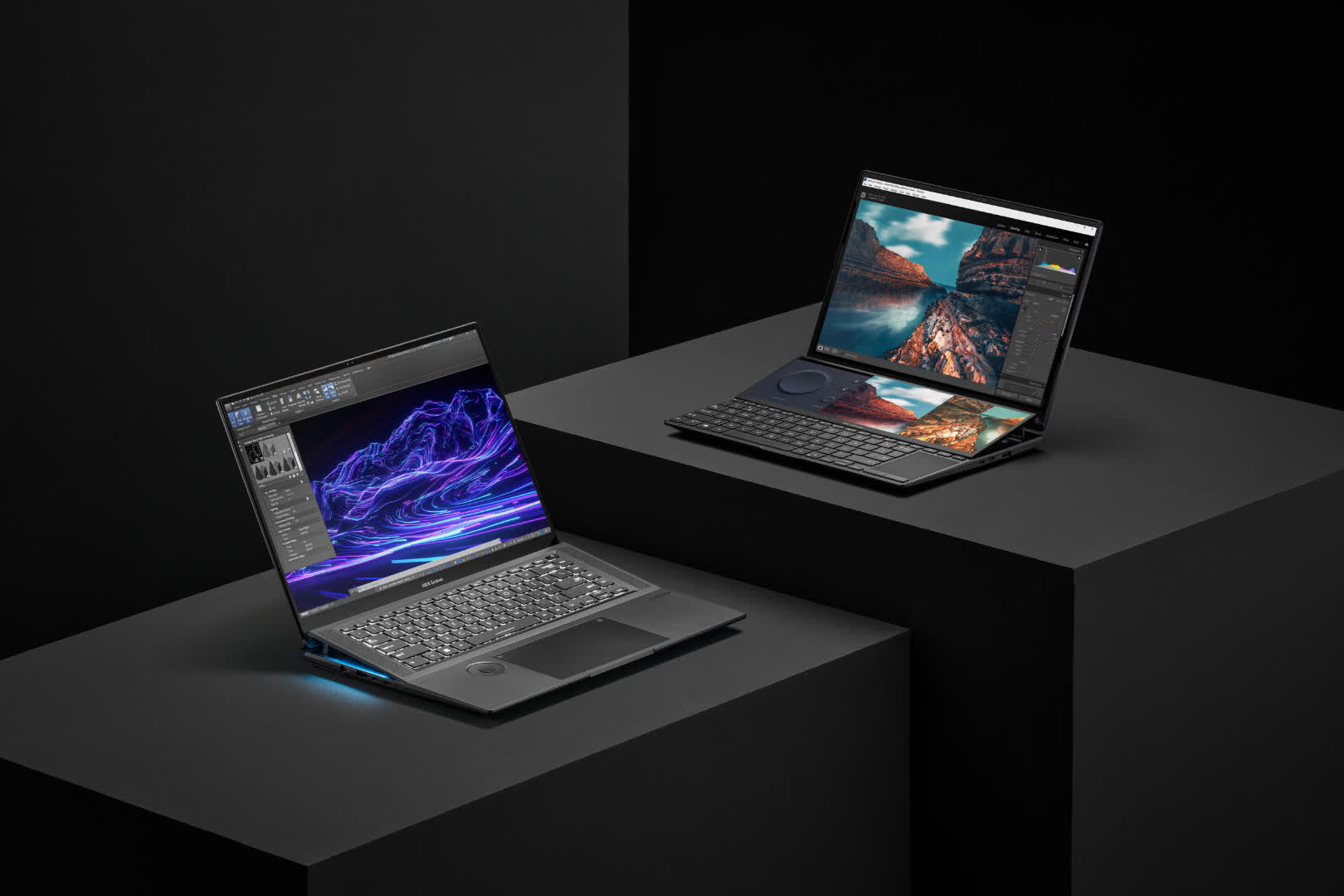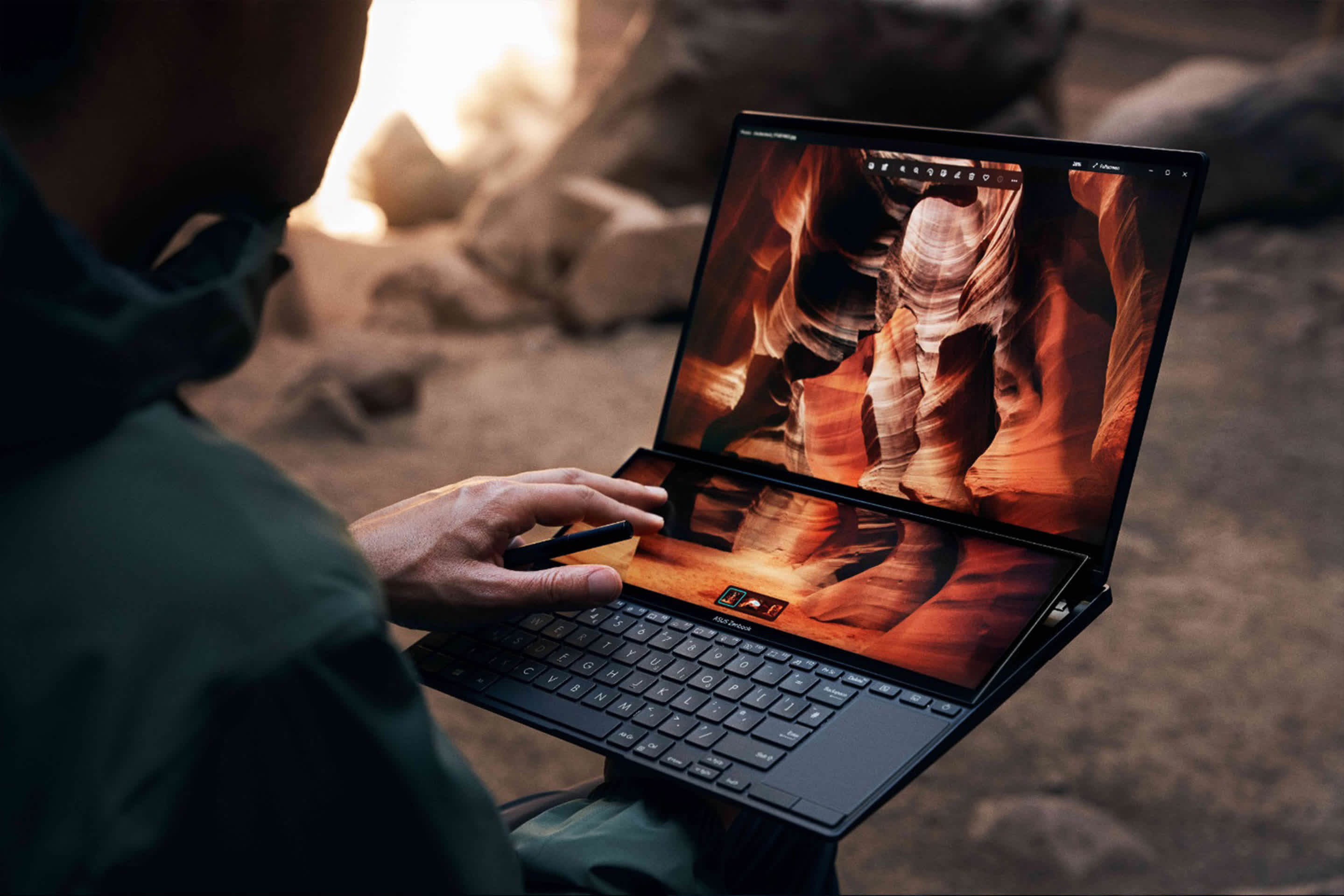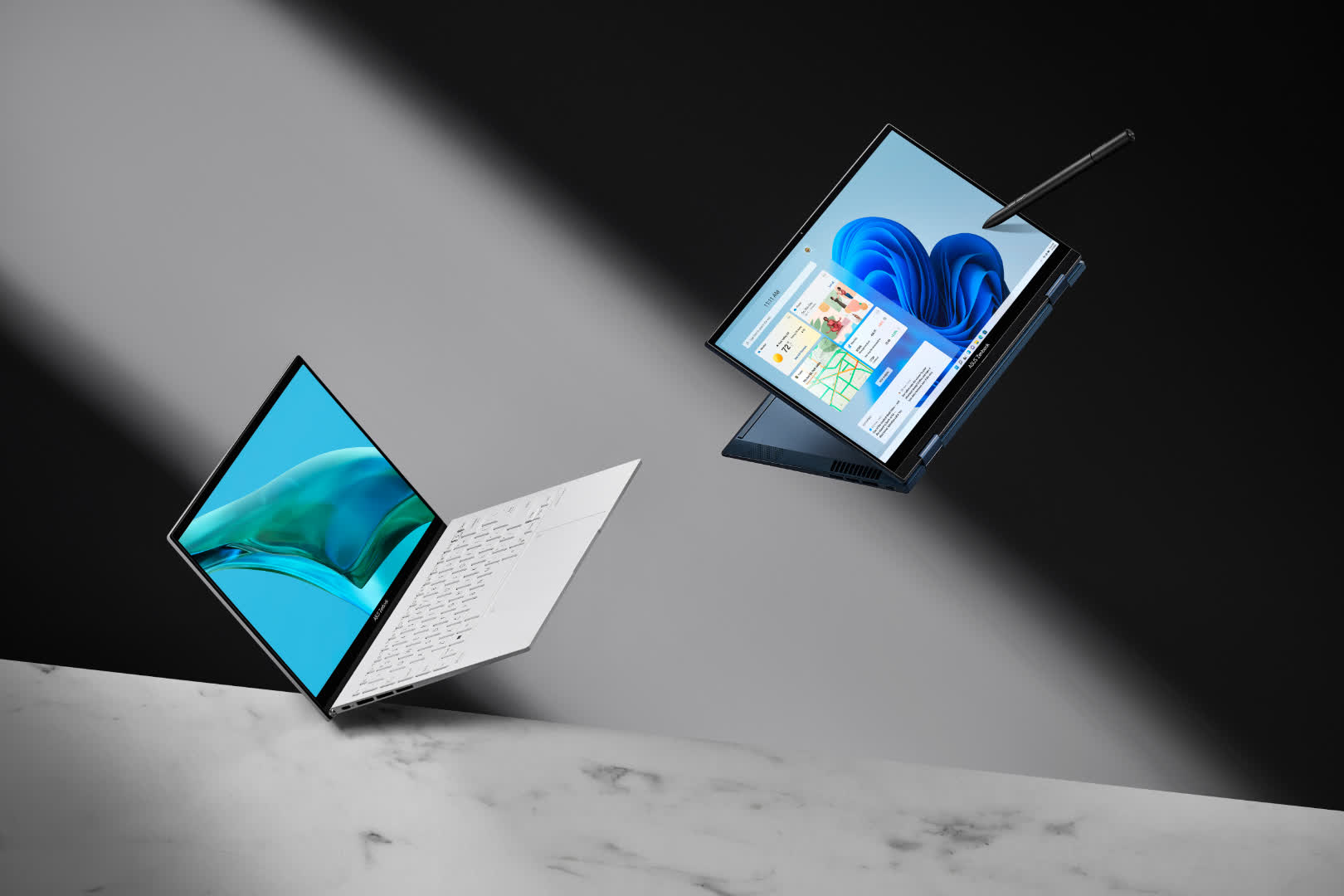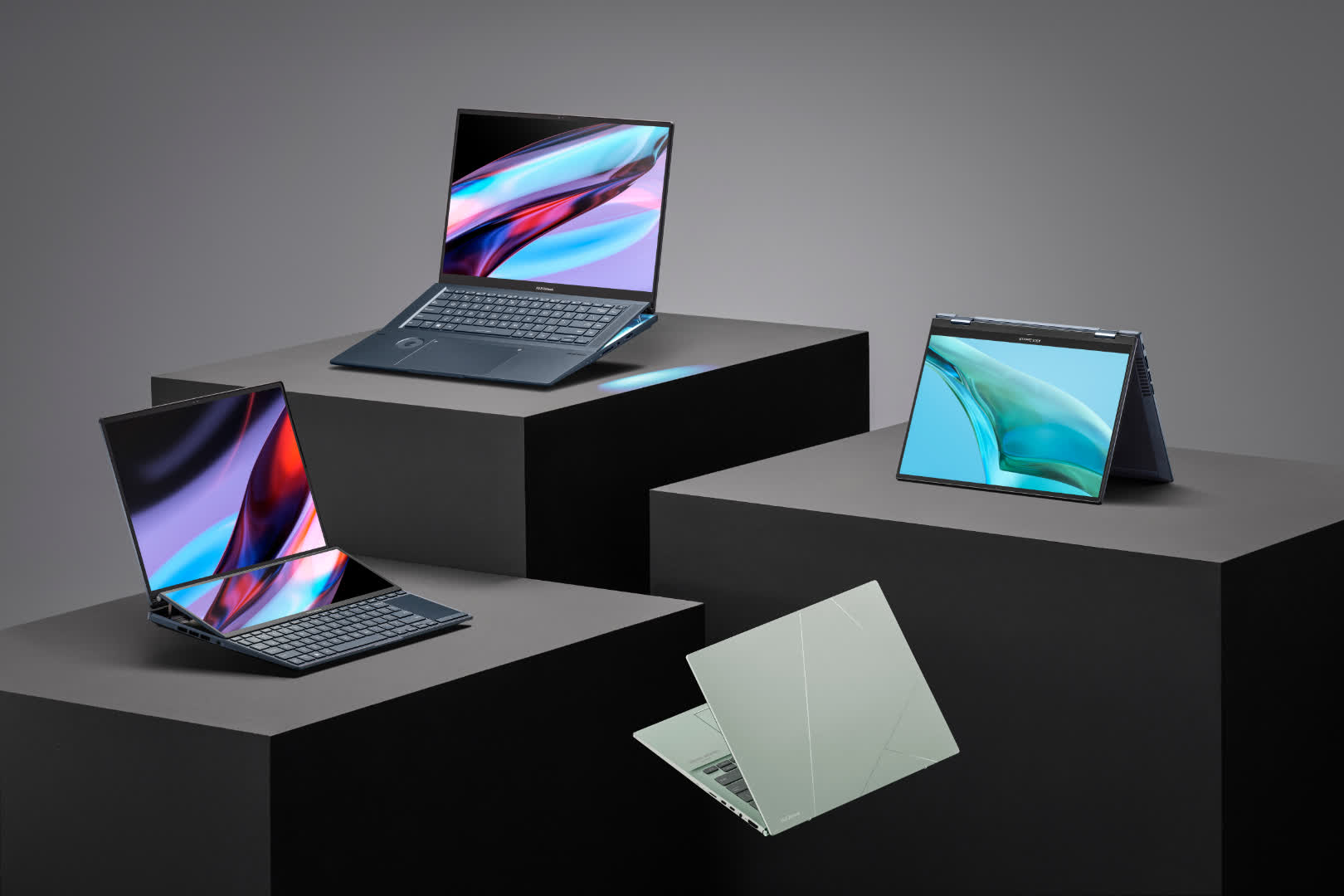Bottom line: Of the five newly announced creator-focused laptops, Asus has put the most power inside the Zenbook Pro 16X OLED. This model and the 14-inch dual-screen variant come with 12th-gen Core i9 chips and Nvidia RTX graphics, while the 15-inch model gets a Core i7/Intel Arc GPU combo. The newly added 17-inch Pro combines an AMD Ryzen 9 chip with Nvidia RTX graphics. For creators after something lightweight and portable, there's the newly announced S13 Flip series arriving soon in both Intel and AMD flavors.
Asus has covered pretty much every laptop form factor with its refreshed Zenbook lineup, targeting creators with a variety of use cases and budgets. The main highlight is the Zenbook Pro 16X OLED (UX7602), Asus' most powerful Zenbook to date. Fully specced, its 16.9mm, 2.4kg aluminum chassis can house a 14C/20T Core i9-12900H chip paired with an RTX 3060 GPU (70W), 32GB RAM and 2TB of PCIe 4.0 M.2 storage.
Asus notes that the Zenbook Pro 16X is an Nvidia Studio validated laptop, which means it comes with optimized display drivers for creative apps like After Effects, Maya, Blender, and DaVinci Resolve. It's also helped by the 4K 16:10 OLED 60Hz touch panel that's Pantone validated, supports 100 percent of the DCI-P3 color space and offers 550 nits of max brightness. Further control over apps is made possible by a rotatory controller next to the haptics-enabled touchpad.

For thermals, the Zenbook Pro 16X utilizes Asus's new IceCool Pro vapor chamber cooling system that features dual fans with 97 blades each, a 5mm heat pipe for the CPU and GPU, and an Active Aerodynamic System (AAS) Ultra mechanism for heat dissipation. This involves creating a 14.5mm lift that tilts the keyboard by 7 degrees, allowing the CPU and GPU to run at a combined total of 140W TDP without throttling.
Asus claims a rather impressive battery life of up to 10 hours with the onboard 96Wh unit, though that's likely considering light to moderate use. In terms of connectivity, the Zenbook Pro 16X comes with dual Thunderbolt 4 ports, alongside a single HDMI 2.1, USB 3.2 Gen 2 Type-A port, 3.5mm jack, microSD card reader, and DC-in for the 200W power adapter. It's expected to go on sale later this month, starting at $2,600 for the base model.

Its slightly smaller dual-screen sibling, the Zenbook Pro 14 Duo OLED can also be had with the same 14C/20T Core i9-12900H chip, RAM, storage and connectivity options, but here the graphics max out with an RTX 3050Ti.
The Duo's 14.5-inch 16:10 OLED screen has a resolution of 2,880 x 1,800px with a smoother 120Hz refresh rate. The smaller chassis weighs up to 1.75kg depending upon specs and comes with a 4-cell 76Wh battery. This model is expected to start at $2,000 when it goes on sale later this month.

Asus has also given a hardware refresh to its existing 15.6-inch Duo model (UX582) with an upgrade to 12th-gen Intel chips and RTX 30 series graphics. There's now also a newly added 15.6-inch convertible, called the Zenbook Pro 15 Flip that features a traditional 16:9 display, which Asus says makes it the world's first laptop with a 15.6-inch 2.8K (2,880 x 1,800px) 120Hz OLED touchscreen.
This model makes use of Intel silicon in both the CPU (i7-12700H) and the GPU (Arc A370M) department, and comes with 16GB of soldered RAM and 1TB of M.2 storage. Another interesting addition to the Zenbook Pro series is the new, bigger AMD-powered 17.3-inch variant.
This model is equipped with an 8C/16T Ryzen 9 6900HX or Ryzen 7 6800 mobile silicon, with the option to choose from an RTX 3050 GPU or Radeon R7 graphics. It's also the only model from Asus' latest laptop announcements to feature a non-OLED panel. The 17.3-inch screen, however, is respectable in terms of other specs, and packs QHD resolution, 100 percent DCI-P3 coverage and a smooth 120Hz refresh rate.

Lastly, there are the Intel and AMD-powered variants of the Zenbook S13 Flip OLED. Both feature up to 16GB of RAM and a terabyte of storage but have minor differences in terms of connectivity. The Intel version can be had with either an 8C/16T i7-1260P or an i5-1240P chip, while the AMD model offers the choice of an 8C/16T Ryzen 7 6800U or a 6C/12T Ryzen 5 6600U. There's no dedicated GPU option on either version.
Both models have a 13.3-inch 16:10 OLED touch screen with 2.8K resolution. They also pack the same 67Wh battery in a 14.9mm thin magnesium alloy chassis. Asus claims a 19-hour battery life for the S-series models.
In addition to 'Ponder Blue' and 'Refined White' colors of the Intel variant, Asus will also offer the choice of 'Aqua Celadon' and 'Vestige Beige' finishes on the AMD model when sales begin in Q3 2022.
